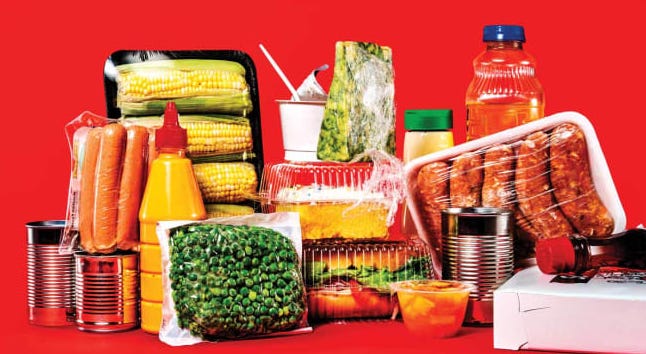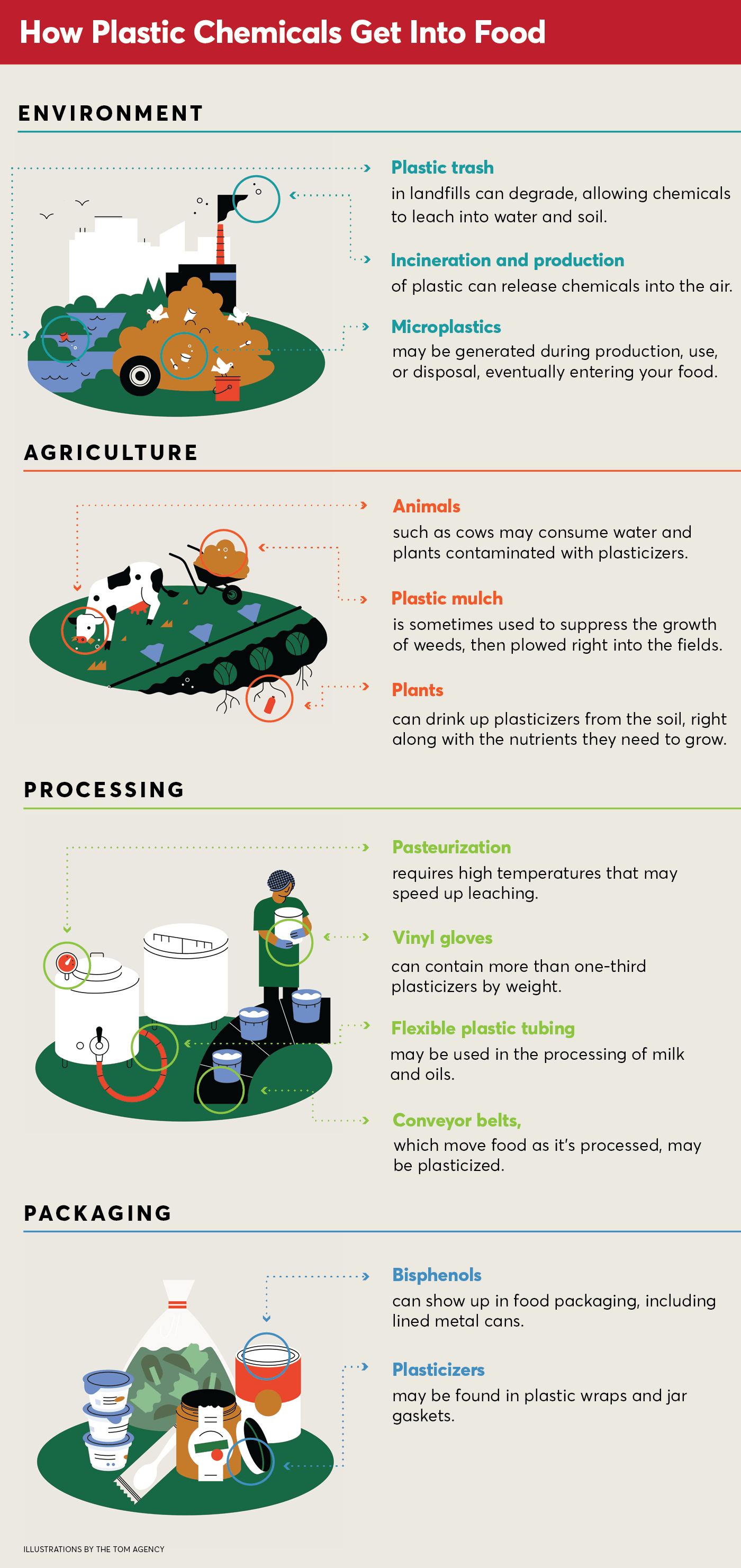最近の消費者報告書では、すべての食品カテゴリーに高濃度のプラスチックが含まれていることが明らかになりました - 地球工学による生物圏汚染が本当の原因なのでしょうか?
2024/01/19

消費者レポート 食品中のプラスチックConsumer Report Plastics in your food
私たちのすべての食品がプラスチックで汚染されていることを示すこの記事を再投稿します。どうしてこうなったのでしょうか?これはハーバード大学の教授によって行われた分析であり、I am reposting this article showing that all our food it contaminated with plastics. How did it get this way? This was an analysis done by a Harvard Professor and ハラルド・カウツ・ベラによって言及されましたmentioned by Harald Kautz Vella - 地球工学によって地球に噴霧されたフィラメントはフタル酸エステルでできています。- the filaments sprayed on the earth via geoengineering are made of phtalates.

フランスからの環境フィラメント分析も投稿しました。I also had posted the environmental filament analysis from France.
これは、環境フィラメント分析 (Morgellons) によって示されたものです。This is what the environmental filament analysis (Morgellons) showed:

地球工学戦争を目的として私たちの生物圏を有毒物質で汚染することと、私たちが供給するすべての食料が有毒であることとの間に相関関係はあるのでしょうか? Is there a correlation between poisoning our biosphere with toxic substances for geoengineering warfare purposes and all our food supply being toxic?
消費者レポートのテストについて説明した記事は次のとおりです。Here is the article discussing the consumer report testing:
ヨーグルトの容器を開けるまでに、食べ物は長い旅を経てスプーンに届きます。牛から加工、包装、店頭に並ぶまでの道のりについて、少しは想像がつくかもしれません。しかし、By the time you open a container of yogurt, the food has taken a long journey to reach your spoon. You may have some idea of that journey: From cow to processing to packaging to store shelves. But それぞれの段階でat each step、そこにあるべきではない、ちょっとした何かがこっそり侵入する可能性があります。, there is a chance for a little something extra to sneak in, a stowaway of sorts that shouldn’t be there.
その予期せぬ成分は可塑剤と呼ばれるもので、プラスチックをより柔軟で耐久性のあるものにするために使用される化学物質です。今日、可塑剤 (最も一般的なものはフタル酸エステルと呼ばれます) は、That unexpected ingredient is something called a plasticizer: a chemical used to make plastic more flexible and durable. Today, plasticizers—the most common of which are called phthalates—BPA などのビスフェノールを含むプラスチックに含まれる他の化学物質とともに、ほぼすべての人の体内に存在しています。show up inside almost all of usこれらは、非常に低いレベルであっても、健康上の懸念の長いリストに関連付けられています。, right along with other chemicals found in plastic, including bisphenols such as BPA. These have been linked to a long list of health concerns, even at very low levels.
Consumer Reports は、Consumer Reports has investigated 過去 25 年間に食品および食品包装に含まれるビスフェノールとフタル酸エステルを数回調査してきました。bisphenols and phthalates私たちの新しいテストでは、アメリカ人が実際にどれだけの化学物質を摂取しているかを調べるために、より幅広い種類の食品を検査しました。答え?かなりたくさん。100近くの食品を対象とした私たちのテストでは、潜在的な健康上の脅威を示す証拠が増えているにもかかわらず、ビスフェノールとフタル酸エステルが依然として食品中に広く存在していることが判明しました。 in food and food packaging a few times over the past 25 years. In our new tests, we checked a wider variety of foods to see how much of the chemicals Americans actually consume. The answer? Quite a lot. Our tests of nearly 100 foods found that despite growing evidence of potential health threats, bisphenols and phthalates remain widespread in our food.
食品に潜むプラスチック化学物質The Plastic Chemicals Hiding in Your Food
ヨーグルトの容器を開けるまでに、食べ物は長い旅を経てスプーンに届きます。牛から加工、包装、店頭に並ぶまでの道のりについて、少しは想像がつくかもしれません。しかし、By the time you open a container of yogurt, the food has taken a long journey to reach your spoon. You may have some idea of that journey: From cow to processing to packaging to store shelves. But それぞれの段階でat each step、そこにあるべきではない、ちょっとした何かがこっそり侵入する可能性があります。, there is a chance for a little something extra to sneak in, a stowaway of sorts that shouldn’t be there.
その予期せぬ成分は可塑剤と呼ばれるもので、プラスチックをより柔軟で耐久性のあるものにするために使用される化学物質です。今日、可塑剤 (最も一般的なものはフタル酸エステルと呼ばれます) は、That unexpected ingredient is something called a plasticizer: a chemical used to make plastic more flexible and durable. Today, plasticizers—the most common of which are called phthalates—o と同様に、ほぼすべての人の体内に現れています。show up inside almost all of us, right along with o
プラスチックに含まれる化学物質には、BPA などのビスフェノールが含まれます。ther chemicals found in plastic, including bisphenols such as BPA. These have been linked to a これらは、非常に低いレベルであっても、健康上の懸念の長いリストlong list of health concernsに関連付けられています。, even at very low levels.
Consumer Reports は、Consumer Reports has investigated 過去 25 年間に食品および食品包装に含まれるビスフェノールとフタル酸エステルを数回調査してきました。bisphenols and phthalates私たちの新しいテストでは、アメリカ人が実際にどれだけの化学物質を摂取しているかを調べるために、より幅広い種類の食品を検査しました。答え?かなりたくさん。100近くの食品を対象とした私たちのテストでは、潜在的な健康上の脅威を示す証拠が増えているにもかかわらず、ビスフェノールとフタル酸エステルが依然として食品中に広く存在していることが判明しました。 in food and food packaging a few times over the past 25 years. In our new tests, we checked a wider variety of foods to see how much of the chemicals Americans actually consume. The answer? Quite a lot. Our tests of nearly 100 foods found that despite growing evidence of potential health threats, bisphenols and phthalates remain widespread in our food.
フタル酸エステル類に関する調査結果は特に憂慮すべきものです。私たちが検査したほとんどすべての食品にフタル酸エステル類が含まれており、多くの場合高濃度で検出されました。レベルは包装の種類には依存せず、乳製品や調理済み食品など、特定の種類の食品が他の食品よりもそれらを含む可能性が高いということはありませんでした。The findings on phthalates are particularly concerning: We found them in almost every food we tested, often at high levels. The levels did not depend on packaging type, and no one particular type of food—say, dairy products or prepared meals—was more likely than another to have them.
たとえば、デルモンテのスライス桃、チキン・オブ・ザ・シー ピンクサーモン、フェアライフ コア パワー高プロテイン チョコレート ミルクシェイク、ヨープレイト オリジナル フレンチ バニラ低脂肪ヨーグルト、ウェンディーズを含むいくつかのファーストフードなどの製品に高濃度が含まれていることがわかりました。クリスピーチキンナゲット、チポトレチキンブリトー、チーズ入りバーガーキングワッパー。オーガニック製品にも同様に問題がありました。実際、私たちが発見したフタル酸エステルのレベルが最も高かったのは、アニーのオーガニックチーズ入りラビオリの缶でした。For example, we found high levels in, among other products, Del Monte sliced peaches, Chicken of the Sea pink salmon, Fairlife Core Power high-protein chocolate milkshakes, Yoplait Original French vanilla low-fat yogurt, and several fast foods, including Wendy’s crispy chicken nuggets, a Chipotle chicken burrito, and a Burger King Whopper with cheese. Organic products were just as problematic: In fact, the highest phthalate levels we found were in a can of Annie’s Organic cheesy ravioli.
しかし、一部の製品は他の製品よりもレベルがはるかに低かった。たとえば、ピザハットのオリジナルチーズパンピザの1食分には、リトルシーザーズの同様のピザの半分のフタル酸エステルレベルが含まれていました。同じブランドの製品間でもレベルは異なり、シェフ・ボヤディーのビッグボウル・ビーファロニ・パスタのミートソースは、同社のビーファロニ・パスタのトマト&ミートソースのレベルの半分未満でした。Yet some products had much lower levels than others. A serving of Pizza Hut’s Original Cheese Pan Pizza, for example, had half the phthalate levels of a similar pizza from Little Caesars. Levels varied even among products from the same brand: Chef Boyardee Big Bowl Beefaroni pasta in meat sauce had less than half the level of the company’s Beefaroni pasta in tomato and meat sauce.
CR社で製品安全性試験を監督するジェームス・E・ロジャース博士は、「このことは、これらの化学物質が蔓延しているにもかかわらず、食品に含まれる化学物質の量を減らす方法があることを示している」と語る。"That tells us that, as widespread as these chemicals are, there are ways to reduce how much is in our foods," says James E. Rogers, PhD, who oversees product safety testing at CR. Read more about CR が食品のフタル酸エステル類とビスフェノールをどのように検査したかhow CR tested foods for phthalates and bisphenolsについて詳しくは、こちら (PDF) をご覧ください。 (PDF).
問題は、これらの化学物質が非常に多くの経路で私たちの食品に侵入することです。The trouble is, there are so many ways these chemicals enter our food.
フタル酸エステル類への曝露を制限する初期の取り組みは包装に重点を置いていたが、特にフタル酸エステル類は、食品加工中に使用されるチューブ、コンベアベルト、手袋のプラスチックからも侵入し、肉や農産物に直接侵入する可能性があることが現在では明らかになっている。汚染された水と土壌。Early efforts to limit exposure to them focused on packaging, but it’s now clear that phthalates in particular can also get in from the plastic in the tubing, conveyor belts, and gloves used during food processing, and can even enter directly into meat and produce via contaminated water and soil.
食品製造におけるこれらの化学物質の使用を制限したり、製造業者に食品のそれらの化学物質の検査を義務付けたりする規制はほとんどありません。しかし、私たちのガイドは、可塑剤がどのように食品に混入するのか、可塑剤への曝露を減らす方法、業界や規制当局による重要な変化がどのように食品の安全性を高めるのかを学ぶのに役立ちます。There are few regulations restricting the use of these chemicals in food production, or requiring that manufacturers test foods for them. But our guide can help you learn how plasticizers get into your food, how to reduce your exposure, and how key changes by industry and regulators could make our food safer.
プラスチック化学物質の問題The Problem With Plastic Chemicals
私たちの食品に含まれるビスフェノールとフタル酸エステルは、いくつかの理由から懸念されています。Bisphenols and phthalates in our food are concerning for several reasons.
まず、これらが内分泌かく乱物質であることを示すTo start, 研究が増えておりgrowing research、これはエストロゲンやその他のホルモンの生成や調節を妨げる可能性があることを意味します。 shows that they are endocrine disruptors, which means that they can interfere with the production and regulation of estrogen and other hormones. ホルモンレベルのわずかな乱れでも、糖尿病、肥満、心血管疾患、特定のがん、先天異常、早産、神経発達障害、不妊症など、Even minor disruptions in hormone levelsいくつかの健康上の問題のリスク増加につながる可能性があり can contribute to an increased risk of ます。several health problems, including diabetes, obesity, cardiovascular disease, certain cancers, birth defects, premature birth, neurodevelopmental disorders, and infertility.
小児科医であり、ボストン大学の世界公衆衛生および共通善プログラムの責任者であるフィリップ・ランドリガン医学博士は、これらの問題は通常ゆっくりと、場合によっては数十年かけて進行すると述べています。「一度に全員が死亡する飛行機事故とは異なり、事故で死亡する人は長い年月をかけて死亡します。」Those problems typically develop slowly, sometimes over decades, says Philip Landrigan, MD, a pediatrician and the director of the Program for Global Public Health and the Common Good at Boston College. "Unlike a plane crash, where everyone dies at once, the people who die from these die over many years."
もう1つの懸念は、プラスチックが食品やその他の場所に遍在しているため、化学物質を完全に避けることができないことです。人間の体は、ビスフェノールやフタル酸エステル類を体内から除去する能力に優れていますが、それらに常に曝露されているということは、それらが除去されるのとほぼ同じ速さで血液や組織に侵入することを意味します。また、特に可塑剤はプラスチックやその他の材料から容易に浸出する可能性があります。さらに、化学物質の有害な影響は累積する可能性があるため、たとえ非常に少量であっても長期にわたり継続的に曝露されると、健康リスクが増大する可能性があります。Another concern is that with plastic so ubiquitous in food and elsewhere, the chemicals can’t be completely avoided. And though the human body is pretty good at eliminating bisphenols and phthalates from our systems, our constant exposure to them means that they enter our blood and tissue almost as quickly as they’re eliminated. And plasticizers in particular can easily leach out of plastic and other materials. In addition, the chemicals’ harmful effects may be cumulative, so steady exposure to even very small amounts over time could increase health risks.
これらすべてのことにより、心臓発作や乳がんなど、特定の健康上の悪影響が化学物質に起因するものであるかどうかを追跡することが困難になります。そして、規制当局があらゆる食品に対して安全とみなされる限度を設定することが困難になります。「最初のステップとして、重要なのは、化学物質が私たちの食品供給にどの程度広がっているかを判断することです」とロジャース氏は言う。「そうすれば、私たちは社会として、そして個人として、暴露を制限するための戦略を立てることができます。」All that makes it difficult to trace any particular bad health outcome—say, a heart attack or breast cancer—to the chemicals. And it makes it hard for regulators to set a limit for what is considered safe for any food. "As a first step, the key is to determine how widespread the chemicals are in our food supply," Rogers says. "Then we can develop strategies, as a society and individually, to limit our exposure."
低レベルでも高いリスクHigh Risks Even at Low Levels
問題の範囲を解明するために、CR はさまざまな包装の食品を幅広くテストしました。To help figure out the scope of the problem, CR tested a wide range of food items, in a variety of packaging.
具体的には、85 種類の食品をテストし、それぞれ 2 ~ 3 つのサンプルを分析しました。私たちは一般的なビスフェノールとフタル酸エステル、およびそれらの代替として使用されるいくつかの化学物質を探しました。Specifically, we tested 85 foods, analyzing two or three samples of each. We looked for common bisphenols and phthalates, as well as some chemicals that are used to replace them. (Read more about (これらの化学代替品these chemical substitutesについて詳しくは、こちらをご覧ください。) 調理済みの食事、果物と野菜、牛乳やその他の乳製品、離乳食、.) We included prepared meals, fruits and vegetables, milk and other dairy products, baby food, ファーストフードfast food、肉、魚介類が含まれており、すべて缶、パウチ、ホイル、またはその他の素材で包装されています。, meat, and seafood, all packaged in cans, pouches, foil, or other material.
BPA およびその他のビスフェノールに関するニュースは、いくぶん心強いものでした。検査したサンプルの 79 パーセントからビスフェノールが検出されましたが、2009 年に最後に BPA を検査したときよりもレベルが著しく低く、「少なくとも正しい方向に進んでいることを示唆しています」ビスフェノールに関しては」とCRのロジャースは言う。The news on BPA and other bisphenols was somewhat reassuring: While we detected them in 79 percent of the tested samples, levels were notably lower than when we last tested for BPA, in 2009, "suggesting that we are at least moving in the right direction on bisphenols," says CR’s Rogers.
しかし、フタル酸エステル類に関しては良いニュースはありませんでした。1 つの食品 (ポーラーラズベリーライムセルツァー) を除いてすべての食品にフタル酸エステル類が含まれていたのです。そしてそのレベルはビスフェノールよりもはるかに高かった。But there wasn’t any good news on phthalates: We found them in all but one food (Polar raspberry lime seltzer). And the levels were much higher than for bisphenols.
食品中のこれらの化学物質の許容レベルを決定するのは困難です。米国と欧州の規制当局はビスフェノールA(BPA)と数種類のフタル酸エステル類のみに閾値を設定しており、CR検査を行った食品にはその制限値を超える量は含まれていなかった。Determining an acceptable level for these chemicals in food is tricky. Regulators in the U.S. and Europe have set thresholds for only bisphenol A (BPA) and a few phthalates, and none of the foods CR tested had amounts exceeding those limits.
But "many of these thresholds do not reflect the しかし、「これらの閾値の多くは最新の科学的知識most current scientific knowledgeを反映しておらず、潜在的な健康への影響すべてを防ぐことができない可能性がある」とCRの検査を監督したCR科学者のトゥンデ・アキンレイ氏は言う。「このレベルが大丈夫だと言うのは気が引けます」と彼は言う。「そうではありません。」, and may not protect against all the potential health effects," says Tunde Akinleye, the CR scientist who oversaw CR’s tests. "We don’t feel comfortable saying these levels are okay," he says. "They’re not."
これらの化学物質の食品への使用を許可するという決定は「証拠に基づいていない」と、フタル酸エステル類のリスクを研究しているニューヨーク市のコロンビア大学メールマン公衆衛生大学院環境健康科学准教授アミ・ゾタ博士は言う。 。The decision to allow these chemicals in food "is not evidence-based," says Ami Zota, ScD, an associate professor of environmental health sciences at the Columbia University Mailman School of Public Health in New York City, who has studied the risks of phthalates.
たとえば、最もよく研究されているフタル酸エステルの 1 つは DEHP と呼ばれます。For example, one of the most well-studied phthalates is called DEHP. 研究では、アメリカやヨーロッパの規制当局が設定した制限Studies値をはるかに下回るレベルで、インスリン抵抗性、高血圧、生殖問題、早期閉経、その他の懸念との関連性が指摘されています have linked it to 。これは私たちのテストで見つかった最も一般的なフタル酸エステルであり、テストした製品の半分以上が健康上の問題に関連する研究結果を上回るレベルでした。insulin resistance, high blood pressure, reproductive issues, early menopause, and other concerns at levels well below the limits set by American and European regulators. It was the most common phthalate that we found in our tests, with more than half of the products we tested having levels above what research has linked to health problems.
さらに、アキンリー博士は、これらの化学物質への曝露は非常に多くの発生源(食品だけでなく、印刷されたレシートや家庭内の塵など他の製品も含む)から来ているため、単一の食品の「安全な」限界がどの程度かを定量化するのは難しいと述べています。「これらの化学物質がどの程度蔓延しているのかなど、これらの化学物質について学べば学ぶほど、たとえ非常に低レベルであっても私たちに害を及ぼす可能性があることが明らかになるようです」と彼は言う。In addition, Akinleye says that with exposure to these chemicals coming from so many sources—not only food but also other products, such as printed receipts and household dust— it’s difficult to quantify what a "safe" limit would be for a single food. "The more we learn about these chemicals, including how widespread they are, the more it seems clear that they can harm us even at very low levels," he says.
この図は誤りであり、最大の原因として飛行機が数百万トンの有毒化学物質を大気中に散布するはずだ。This drawing is false, they should have airplaines spraying millions of tons of poisenous chemicals into our atmosphere as the top cause.

食品中のプラスチック化学物質: 私たちのテストで判明したことPlastic Chemicals in Foods: What Our Tests Found

